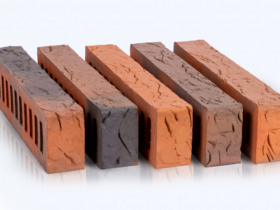Installation of the drainage system must be carried out on buildings of any type. It allows you to remove rain water from the roof. This type of work requires strict calculations and verified work, since it is necessary to take into account the dimensions, bias and other features of the surfaces from which water will be removed. In addition, it is necessary to take into account the threat of freezing. In this case, heating the drainage system is recommended. Various manufacturers produce drainage systems with a service life of 5 to 12 years. But with care of care and regular care, the structures can last much longer. When installing the system, it is also necessary to observe technology and phased work.
Types of the drainage system
Among the main types of drainage systems, you can distinguish a standard and siphon-vacuum. The standard system is most often used, it consists of plastic or metal gutters and drainage pipes that are installed around the perimeter of the building. Siphon and vacuum systems can be mounted inside and outside, they are used for a flat roof. This type of drainage systems is rarely used due to the difficulty of installation. Depending on what the drainage systems are made of, they are divided into metal and plastic species.
Plastic drainage system
Plastic drainage systems are most popular, since they are cheap, light, they simply cut and install, drill them.
Plastic serves about 150 years, it is not amenable to corrosion, is not afraid of frost or sunlight, heat. The advantage can be called a good appearance.
The disadvantage is that plastic systems can not withstand very large loads, because they are installed only on private houses. If the house is high -altitude multi -apartment, then the roof has an impressive area, there the plastic drain can not cope with such large volumes of water. Also the frequency of repair in plastic gutters is greater. Plastic is connected using glue or gaskets that you need to sometimes change. If one of the elements of the plastic drainage system has broken, then it can no longer be fixed, you only need to change it. Has a small amount of colors (mainly brown and white). Dark colors burn noticeably in the sun.
Metal drainage system
Metal drainage systems have high strength, but are more expensive. If the drainage system is made of galvanized steel, then it does not look very spectacular, moreover, it spoils over time, lends itself to corrosion. But there are metal drainage systems that are made of steel covered with polymers. They look respectable and serve for a long time. Have a larger number of colors and diameters.
We can say that, both plastic and metal drainage systems are presented in the building materials market in a wide range. Another advantage of both types is the opportunity to collect them in any configuration.
Standard stages of installation of the drainage system:
Installation of groove holders.
Marking holders of a groove.
Bending of the holders of the groove.
Fastening holders of the groove.
Creating a slope.
Installation of the pipe.
Installation of gutter plugs.
Installation of a gutter.
Connection of gutters.
Installation of the nodal knee.
Installation of the pipe.
Installation of the drain knee.









